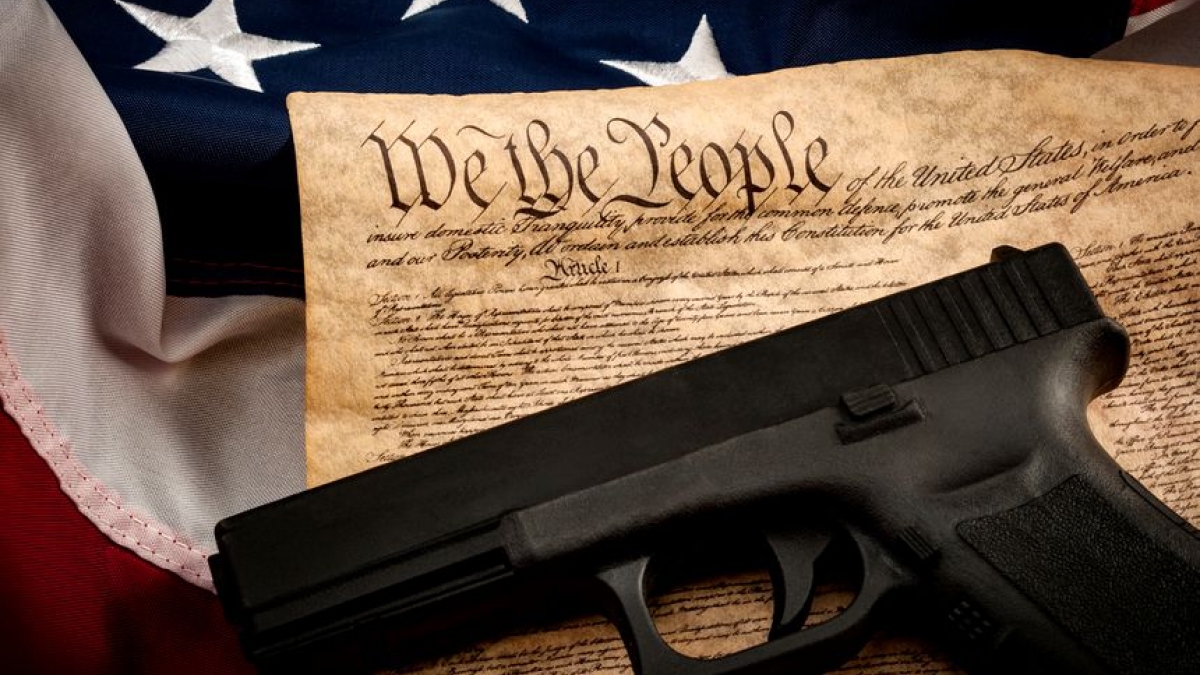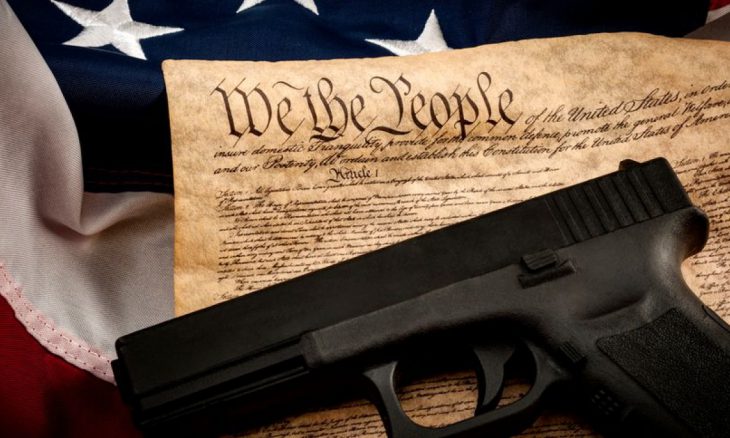Keeping and Bearing Arms

The Second Amendment to the United States Constitution reads, “A well—regulated militia, being necessary to the security of a free State, the right of the people to keep and bear Arms, shall not be infringed.”
Whichever side of the gun rights issue you fall on, the Second Amendment provides the constitutional framework for American gun laws. And, “as with all things constitutional, Americans are adapting 18th century laws to fit 21st century lives,” states the Washington Post.
The framers of the Constitution had their reference in Old English law that provided for “Protestants” to “have arms for their defense suitable to their conditions as allowed by law.” It was often misinterpreted as a right to defend one’s person, home, or property, but in actuality the right to have arms ensured that Parliament could exercise its sovereign right of self-preservation against a tyrannical crown by arming qualified Protestants as a militia. The idea of a “well-regulated militia“ comes from English history which found its way into the American Revolution.
The right to keep and bear arms was seen by the framers as a means to accomplish the objective of having a well-regulated militia that could provide for the defense of the nation and to have a disciplined force to check federal tyranny.
As might be expected, the language used by the framers has initiated great debate regarding the amendment’s intended scope. Cornell Law School wrote in a white paper, “On the one hand, some believe that the Amendment’s phrase ‘the right of the people to keep and bear Arms‘ creates an individual constitutional right to possess firearms. Under this ‘individual right theory,‘ the United States Constitution restricts legislative bodies from prohibiting firearm possession, or at the very least, the Amendment renders prohibitory and restrictive regulation presumptively unconstitutional. On the other hand, some scholars point to the prefatory language ‘a well-regulated Militia‘ to argue that the Framers intended only to restrict Congress from legislating away a state’s right to self-defense. Scholars call this theory ‘the collective rights theory.‘ A collective rights theory of the Second Amendment asserts that citizens do not have an individual right to possess guns and that local, state, and federal legislative bodies, therefore, possess the authority to regulate firearms without implicating a constitutional right.”
The concepts of individual rights or collective rights theories have been often litigated. In a 2003 case, District of Columbia v. Heller, the Supreme Court held that “because the framers understood the right of self-defense to be ‘the central component’ of the right to keep and bear arms, the Second Amendment implicitly protects the right ‘to use arms in defense of hearth and home.’”
The issue of assault weapons, such as the AR-15, has been a topic of discussion and debate as to whether they are contemplated by laws such as the Second Amendment. That particular weapon, popular with a large portion of American gun owners, is similar to the military’s M16. Many have argued that the AR-15 is protected by the Second Amendment, but neither the law nor the Second Amendment prevents Congress from banning such weapons.
In June 2022, the House of Representatives passed a bipartisan bill on gun safety, exactly one month after a mass shooting in Uvalde, Texas, took the lives of 19 children and two adults. The Senate passed its version a day later, and President Biden signed it into law. It is the first gun-control measure to come out of Congress in nearly three decades. While some argued for a ban of the AR-15, a compromise was reached in Congress, and the measure focuses on mental health and school safety, while including incentives for states to pass so-called red flag laws.
In July 2022, the House of Representatives barely passed an assault weapon ban bill. The legislation is destined to fail in the Senate because there will not be enough votes to overcome a filibuster. The bill would criminalize the knowing sale, manufacture, transfer, possession, or importation of many types of semi-automatic weapons and large-capacity ammunition-feeding devices.
There is an economic and human cost of gun violence in America. The federal, state, and local governments are spending a combined average of nearly $35 million each day to deal with the aftermath of gun violence across the country. In an average year, gun violence kills 40,000 people in America, wounds twice as many, and the economic consequences to the nation exceed $557 billion.
The human cost is the loss of those whose lives are taken, those who are seriously wounded, and those survivors whose lives are forever altered. Theirs is an ongoing crisis.
There are occasions in Scripture when people have been called upon to defend themselves. In other instances, God reminds His people that He is their Defender. On an occasion after having cast out demons, Jesus said, “When a strong man, fully armed, guards his own palace, his goods are safe, but when one stronger than he attacks him and overcomes him, he takes away his armor in which he trusted and divides his spoil“ (Luke 11:21-22).
How then should we pray?
- With a heart and mind open to the Spirit of the Lord with regard to your position on gun control measures and the Second Amendment.
- For His guidance on the measures you have taken or will take for the protection of your family, “hearth and home.”
- For wisdom for the judges in the nation’s courts as more and more cases involving Second Amendment protections are brought before them.
- For discernment for members of Congress as they consider, introduce, and pass new laws.
- For a national awareness that violence occurs due to the condition of the heart, through a variety of weapons, and for a return to values that recognize the sacredness of life.
- For more effective treatment of those with mental health issues who are prone to gun violence in the extremes.





